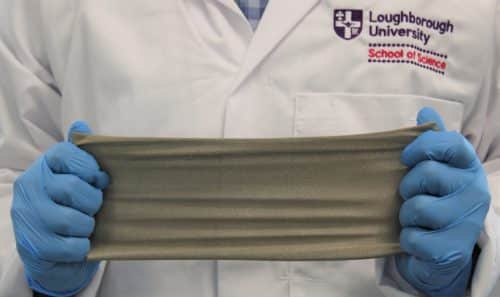A lightweight and thin textile that can produce over 35V of voltage using mild artificial movements.
Dr Ishara Dharmasena of the School of Mechanical, Electrical, and Manufacturing Engineering (MEME) at the University of Moratuwa (Sri Lanka) and a team of researchers from Loughborough University have developed a new, scalable manufacturing technique for creating wearable fabrics embedded with very small power generators known as ‘Triboelectric Nanogenerators’ (TENGs).

Using existing processes such as yarn coating, dip coating, and screen printing to apply triboelectrically active solutions, the technology can turn standard textile materials into ‘energy-generating textiles’. TENG-containing fabrics have a texture similar to knitted materials used to produce sweaters and t-shirts. But unlike your average sweater, these energy-generating fabrics can use our natural body movements to generate electricity to power low-power devices.
The researchers built a 4cm-by-4cm lightweight and thin TENG textile that produced over 35V of voltage using mild artificial movements that mimicked sluggish human movements, and this might soon power low-power health sensors, environmental sensors, and electronic gadgets.
TENG devices gather static charges, such as those that cause a balloon to attach to a wall when rubbed against a sweater or those that cause a shock while stepping on a carpet. TENG devices, once attached to the human body or clothing, ‘slide’ or ‘vibrate’ in response to movement, creating an electrical signal through a process known as ‘electrostatic induction.
“With this research, we were able to demonstrate that we can use the existing textile materials and common textile manufacturing techniques to produce wearable TENGs with balanced electrical and comfort properties”, said Dr Dharmasena.
“The all-textile TENG technology we have developed a convenient power source and a self-powered sensor technology – something that may have been seen as science fiction probably a decade ago! This work will lead to further research on how we can convert the common textiles into energy-generating clothing for various future applications including healthcare, communication, sports and personal electronics.”
Read the entire study here.








